Nikon ZR Hands-On First Impressions: Zed RED Redemption
In the year and a half since Nikon acquired RED, both have been extremely busy with video-focused products. RED released Z-Mount versions of its cinema cameras and Nikon dropped the Nikkor Z 28-135mm PZ video lens as well as a library of RED LUTs for the N-Log profile. However, I’ve been wondering when we’d see a camera that truly fused Nikon and RED technology, and that day has arrived with the release of the Nikon ZR.
Chris Niccolls and I had an opportunity to spend an afternoon with a pre-production camera, and it gave me a good idea of what we can expect from this potentially groundbreaking camera.
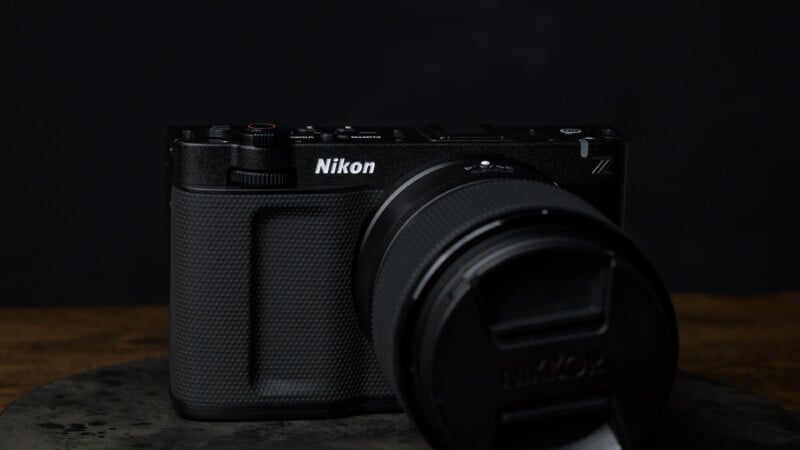
Nikon ZR Hands-On First Impressions: A New Body Design
The camera body is surprisingly compact and minimalist. Weighing in at 630 grams (1.4 pounds), the front is mostly taken up by the massive Z-Mount and the rear by the impressive LCD. It is a clear departure from the vlogging-focused Nikon Z30, with small indents for a grip and a design that owes more to Sony FX3/30 cameras than a small mirrorless camera.
The camera rear also includes an AF joystick (gratefully), as well as the standard affair like a menu and playback buttons. The top of the camera has the power button, a trio of custom buttons, a record button surrounded by a zoom rocker, a photo/video selector switch, and a hot shoe. Interestingly, this shoe debuts Nikon’s new digital interface, which will allow cable-free connection of microphones and adapters in the future.
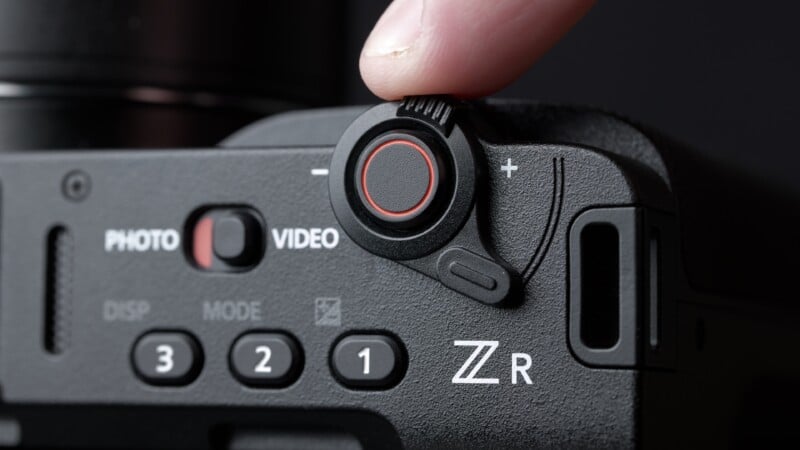


But let’s get back to that screen: it’s a ginormous (yes, that is the technical term) fully articulating 4-inch, 3.07M Dot (1,280 x 800) screen. It’s big, sharp, and surprisingly bright, capable of reaching 1,000 nits. Not only does that make it possible to use in sunny conditions, but it can also properly preview HDR content while recording. While shooting outdoors, I had no issues seeing this display, which is important since there is no electronic viewfinder.
I do have to mention that the design of the LCD, a standard vari-angle, means that it is constantly bumping against any cables you might attach to the ports on the side of the body, and I wish there were an extra level of articulation to prevent that, as seen on many recent Sony and Panasonic cameras.
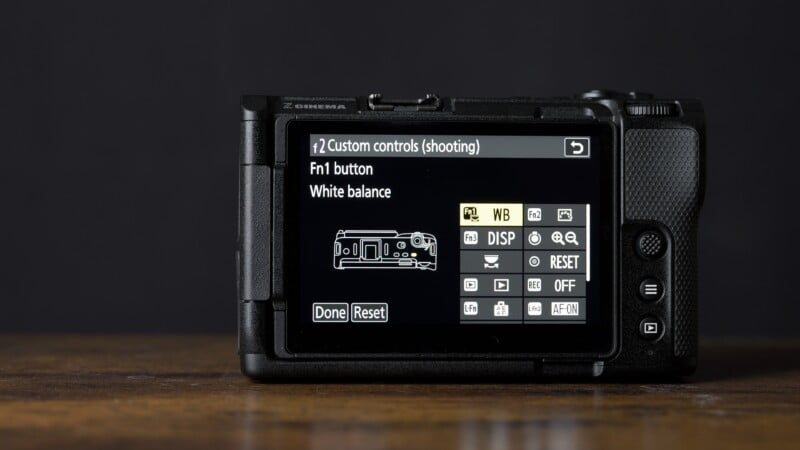

Speaking of ports, the ZR sports the expected microphone, headphone, and USB-C connections. However, unlike most recent Nikon bodies, the ZR uses a micro-HDMI connection. This is an extremely fragile connection and will be annoying for anyone requiring an external monitor. However, the internal RAW video recording and large LCD mean this port will likely be utilized far less than on other competing cameras.
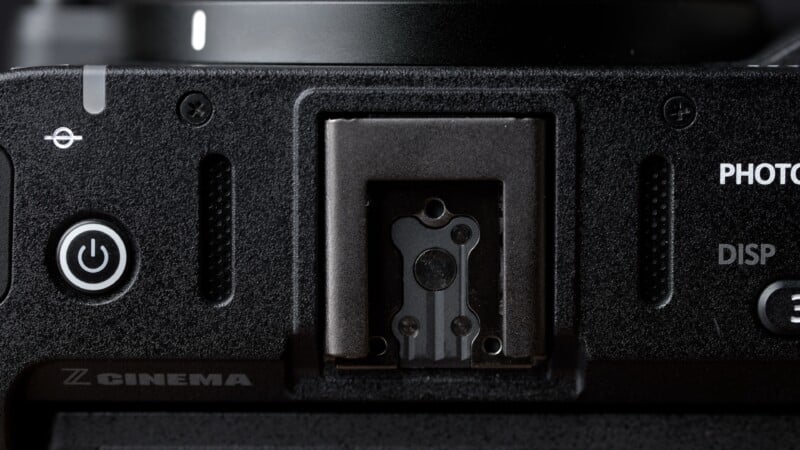
The battery is the EN-EL15C, which is used in most of Nikon’s mid-range cameras, so there’s a good chance Nikon shooters will have some spares. I found that I got a little over an hour of constant use per battery, similar to the performance of recent Z5 II and Z6 III mirrorless cameras. Alongside the battery compartment is a CFexpress Type B card slot, required for RAW video capture, and a microSD slot for recording compressed video — it’s an odd choice, but Nikon may have gone with it simply because it was running out of room in the small camera body.
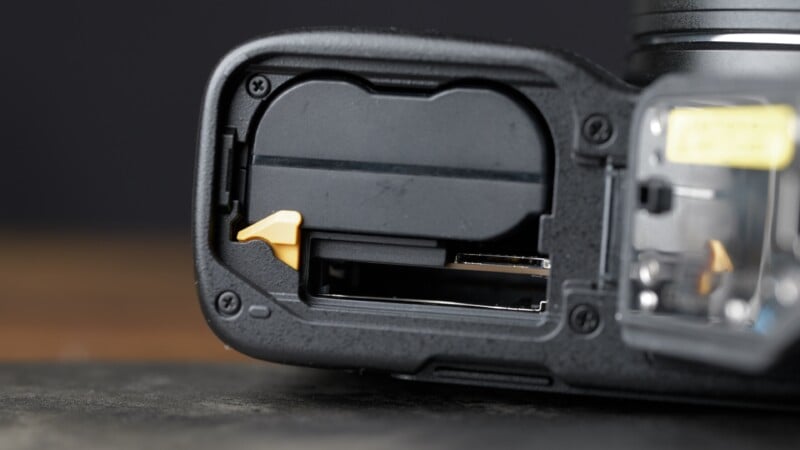
You might not end up using it anyway because, unfortunately, Nikon still does not permit simultaneous backup recording in the ZR. This is something I’d really like to see addressed as they push further into the professional video market.
Nikon ZR First Look: Partially Stacked Power
The sensor is the same full-frame, partially-stacked, 24-megapixel design we saw in the Z6 III. This design trades a bit of dynamic range in exchange for readout speed, something incredibly important in video capture. The ZR lacks a mechanical shutter, but if you need to shoot the occasional photo, the readout speed is fast enough that banding and distortion will be rare.
The advantage for video shooters is the ability to record the 16:9 aspect ratio in 6K resolution at up to 60p, which is seriously impressive. 4Kp120 can also be captured, though a small crop is required. Furthermore, thanks to the nature of the sensor’s design, rolling shutter artifacts in video will be quite well controlled.
There is in-body image stabilization (IBIS) in the ZR. Rated at 7.5 stops in the middle of the image, it is very good at keeping the frame steady. Almost too good, as the default mode will fight you when panning or moving with the camera. For those situations, I recommend using the “Sports” mode. I have been suggesting to Nikon that “Sports” mode should be the default, but so far, it still must be manually selected.

So far, everything I’ve written about Nikon could have been achieved without RED’s involvement, but that ends when it comes to the recording modes.
Like the recent Z bodies, the ZR can record h.264, h.265, ProRes HQ, ProRes Raw, and N-RAW. In addition to that impressive list, you will also find R3D NE encoding. This is a 12-bit version of RED’s legendary compressed RAW video codec. For years, cinematographers have chosen RED cameras for their ability to capture footage with incredible flexibility in post while keeping relatively small file sizes. While the ZR might not provide the 16-bit files found in dedicated RED cinema cameras, the 12-bit files still give plenty of dynamic range and integrate smoothly into an existing R3D workflow with full control of white balance, ISO, and noise reduction. As well, up to 10 R3D LUTs can be loaded into the camera to preview a specific look.
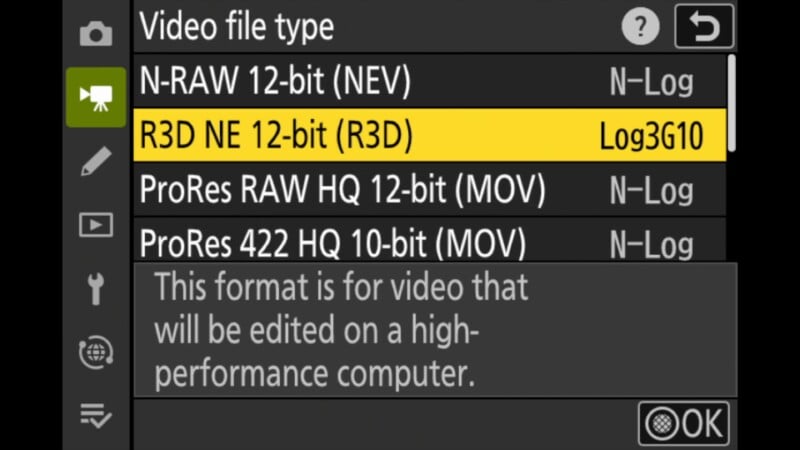
While we were unable to compare the different RAW video formats in this first look, I think the choice will largely come down to a choice of post-production workflow. R3D files will slot into an existing RED workflow like RED CINEXPro, ProRes Raw works natively in Final Cut and with a plugin in Adobe Premiere, and N-Raw is supported in Davinci Resolve. Essentially, no matter your workflow, the ZR can fit into it.

Audio is often more important than video quality, and Nikon has made some real improvements there as well. While I doubt they will be used often in this tier of camera, the three internal microphones can be used in five different pickup patterns, utilizing Nokia’s OZO algorithm to isolate specific subjects. However, what I was more excited to see was native support of 32-bit float, which allows audio levels to be adjusted dramatically in post, without worrying about noise in quiet scenes or peaking when a loud sound occurs. Using 32-bit audio does not require an adapter like Panasonic’s solution; you can just enable it in the menus. That’s pretty slick!

Nikon ZR First Look: Affordable and Capable
Overall, my time with the ZR was so enjoyable that it was disappointing that it was so brief. Nikon has made real strides in the usability of their video modes in recent years, and the ZR is the culmination of those efforts.
All of this said, and given the economic climate, I was very surprised by the $2,200 pricing. I consider the ZR a direct competitor to the Sony FX3, which sells for nearly twice the price at $4,100. The Nikon ZR offers internal RAW video, 6K capture, more effective IBIS, and more detailed stills for WAY less money. In a future full review, I’ll see if there are any additional drawbacks to the ZR, but for now, it looks like one of the most compelling video products in years.